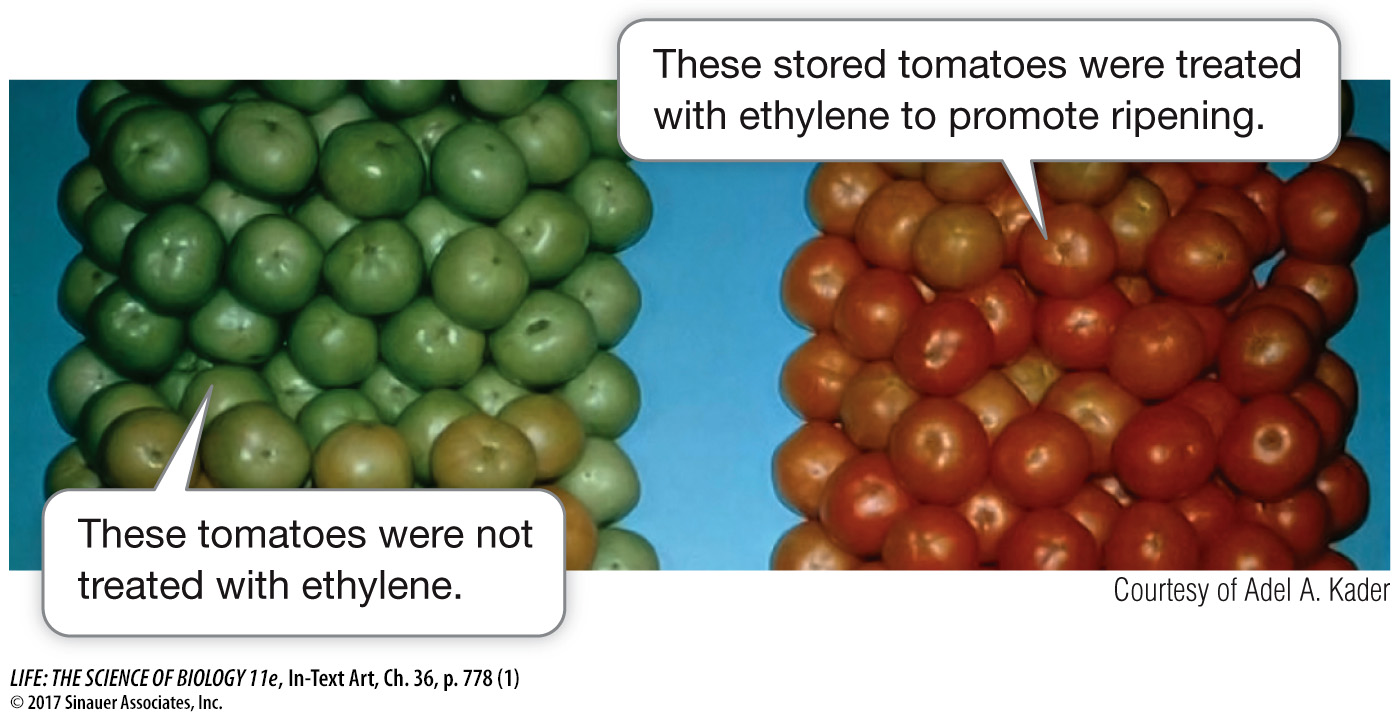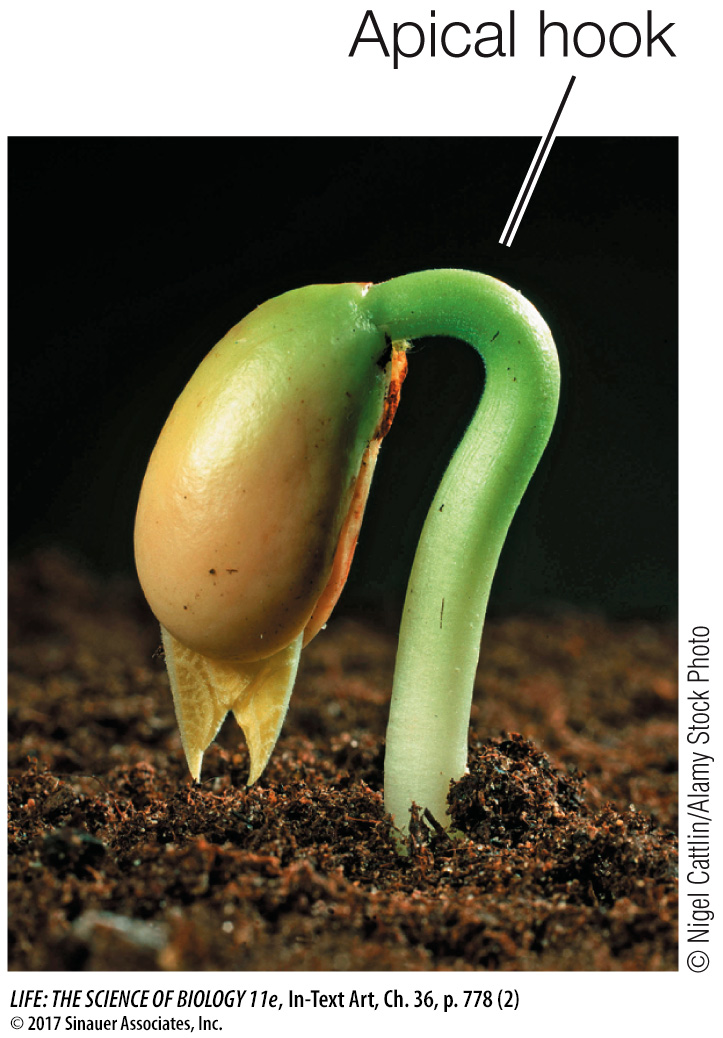Ethylene is a gaseous hormone that hastens leaf senescence and fruit ripening
Whereas the cytokinins delay senescence, another plant hormone promotes it: the gas ethylene (see Table 36.2), which is sometimes called the senescence hormone. Ethylene can be produced by all parts of the plant, and like all plant hormones, it has several effects.
Back when streets were lit by gas rather than by electricity, leaves on trees near street lamps dropped earlier than those on trees farther from the lamps. We now know why: ethylene, a combustion product of the illuminating gas, caused the early abscission. Whereas auxin delays leaf abscission, ethylene strongly promotes it; thus the balance of auxin and ethylene controls abscission.
FRUIT RIPENING By promoting senescence, ethylene also speeds the ripening of fruit. As a fruit ripens, it loses chlorophyll and its cell walls break down; ethylene promotes both of these processes. Ethylene also causes an increase in its own production. Thus once ripening begins, more and more ethylene forms, and because it is a gas, it diffuses readily throughout the fruit and even to neighboring fruits on the same or other plants. The old saying “one rotten apple spoils the barrel” is true. That rotten apple is a rich source of ethylene, which speeds the ripening and subsequent rotting of the other fruit in a barrel or other confined space.
Farmers used to poke holes in developing figs to make them ripen faster. We now know that wounding causes an increase in ethylene production by the fruit, and that the raised ethylene level promotes ripening in many fruits, including apples, bananas, melons, apricots, and tomatoes. Today commercial shippers and storers of such fruit hasten ripening by adding ethylene to storage chambers. This use of ethylene is the single most important use of a natural plant hormone in agriculture and commerce.

Ripening can also be delayed by the use of “scrubbers” and adsorbents that remove ethylene from the atmosphere in fruit storage chambers.
As flowers senesce, their petals may abscise, decreasing their value in the cut-
STEM GROWTH Although it is associated primarily with senescence, ethylene is active at other stages of plant development as well. Its effects on seedling development illustrate the interactions that occur among plant hormones. The hypocotyl of many eudicot seedlings forms an apical hook that protects the delicate shoot apex while the stem grows through the soil:

As in phototropic and gravitropic responses, the apical hook is maintained through an auxin gradient, which promotes the elongation of cells on the outer surface of the hook. Once the seedling breaks through the soil surface and is exposed to light, the auxin level on the inside of the hook increases and the hook unfolds, raising the shoot apex and the expanding leaves into the sun.
There is evidence that ethylene controls the formation of the auxin gradient during seedling development. Treatment of dark-